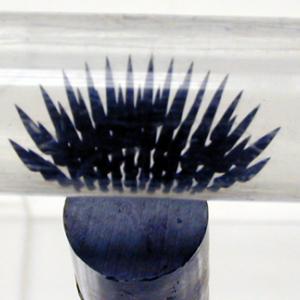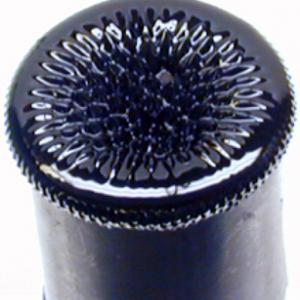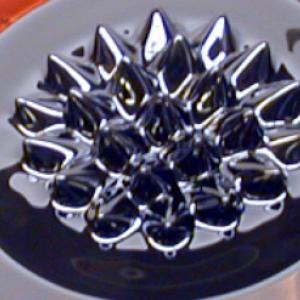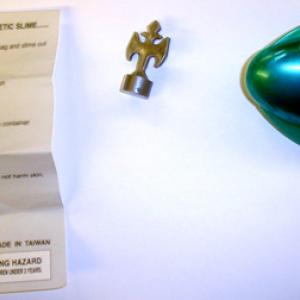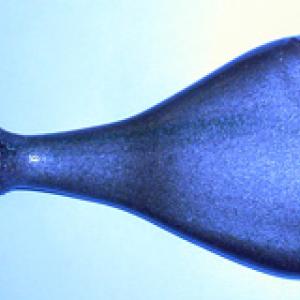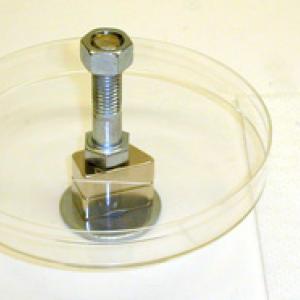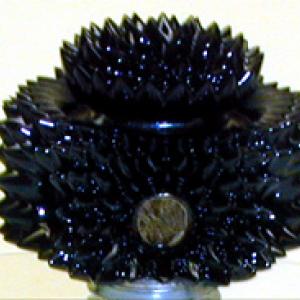College of Liberal Arts & Sciences
5H10.31 - Ferromagnetic Fluids
Bring a magnet close to the preform cell and watch the fluid line up with the field lines.
Pour a small amount of the EFH1 fluid into a watch glass and bring a magnet close to the underside of the glass. Depending upon the type of magnet different field line configurations can be shown.
Sandwich a plastic petri dish between the magnet and the bolt head. Screw the nut on the bolt so that a quarter inch of the bolt end protrudes above the nut. With a pipette add ferrofluid to the top of the bolt and the nut until the desired magnetic field pattern is produced.
- Zoe Boekelheide, "Elongation of a Ferrofluid Droplet Near a Permanent Magnet: A Tidal or Magnetic Energy Effect?", AJP, Vol. 92, #10, Oct. 2024, p. 752.
- Bruce J. Ackerson, Anitra N. Novy, "Forces in Complex Fluids", AJP, Vol. 69, # 5, p. 614, May 2001.
- Daniel J. Klingenberg, "Making Fluids into Solids with Magnets", The Amateur Scientist, 8/1/01.
- James E. Martin, Kyle J Solis, "Mesmerizing Magnetic Fields", Physics Today, Aug. 2015, p. 66.
- J. V. I. Timonen et al., "A Model System for Dynamic Self-Assembly, Physics Today, August 2013, p. 68.
- "Peaks and Labyrinths in a Magnetic Fluid", Physics Today, June 2008, p. 21.
- Borislaw Bilash II, David Maiullo, "Let's See the Lines", A Demo a Day: A Year of Physics Demonstrations, p. 290.
- Arthur B. Ellis, Margret J. Geselbracht, Brian J. Johnson, George C. Lisensky, William R. Robinson, "Ferrofluids", Teaching General Chemistry - A Materials Science Companion, p. 36.
- "Instruction Booklet & Experiment Guide", Ferrofluidics Corporation, 1999.
- Lab 3: Observation of the Unusual Properties of Ferrofluids," California Institute of Technology-Department of Materials Science, MS 90, Spring '01.
- Xubo Liu et al., "Reconfigurable Ferromagnetic Liquid Droplets", Science, Vol. 365, #6450, July 2019, p. 264-267.
Disclaimer: These demonstrations are provided only for illustrative use by persons affiliated with The University of Iowa and only under the direction of a trained instructor or physicist. The University of Iowa is not responsible for demonstrations performed by those using their own equipment or who choose to use this reference material for their own purpose. The demonstrations included here are within the public domain and can be found in materials contained in libraries, bookstores, and through electronic sources. Performing all or any portion of any of these demonstrations, with or without revisions not depicted here entails inherent risks. These risks include, without limitation, bodily injury (and possibly death), including risks to health that may be temporary or permanent and that may exacerbate a pre-existing medical condition; and property loss or damage. Anyone performing any part of these demonstrations, even with revisions, knowingly and voluntarily assumes all risks associated with them.
